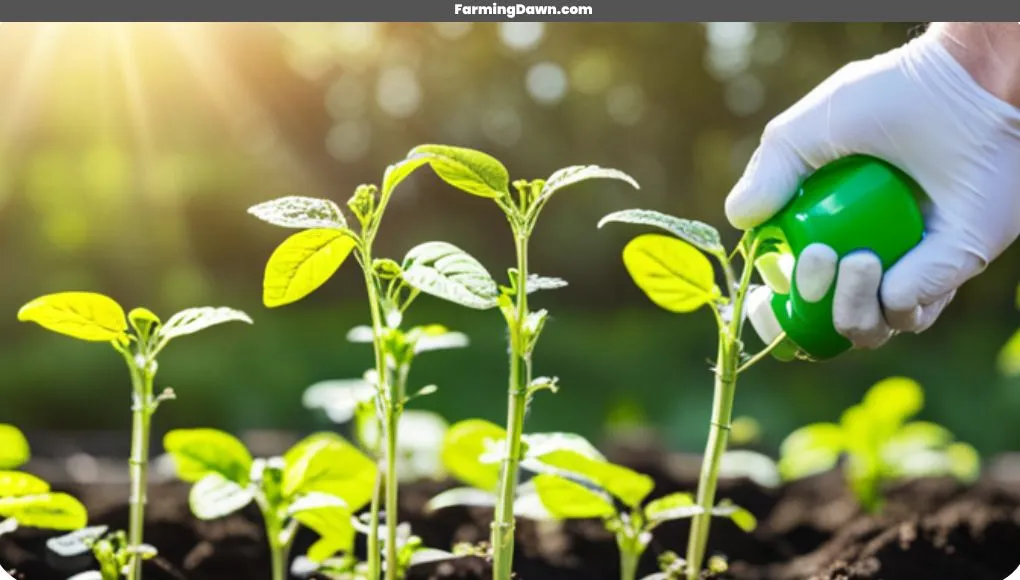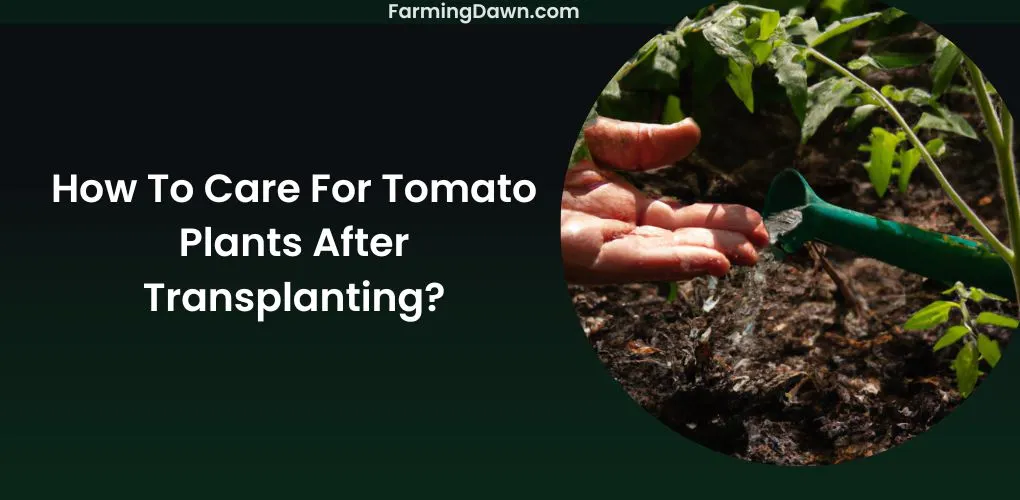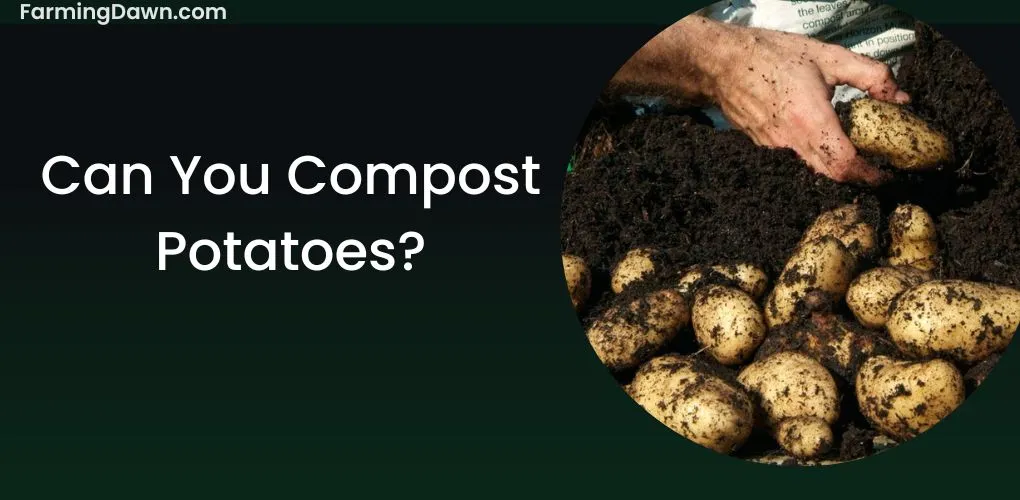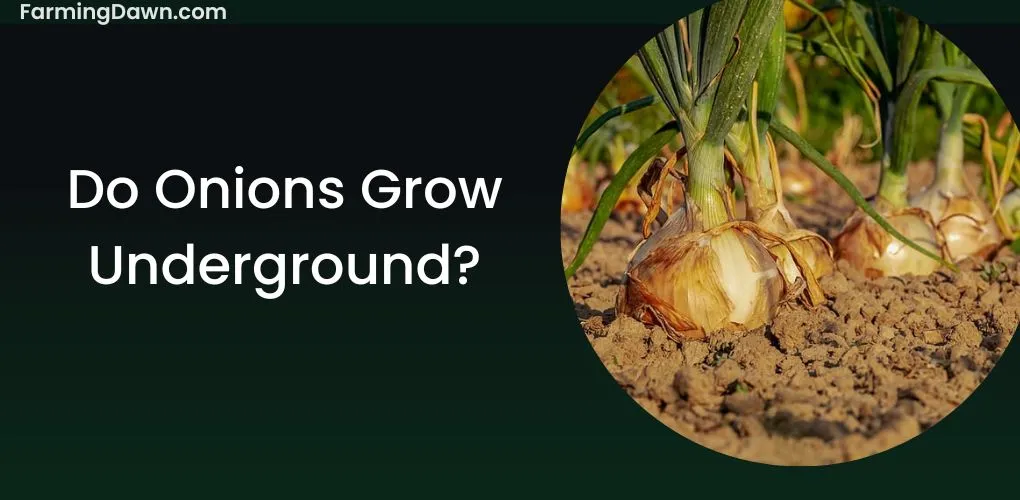Gardening is one of the most rewarding activities out there, and it’s especially gratifying when caring for tomatoes. Tomatoes are a great vegetable that can be harvested in your own backyard and enjoyed by everyone in the family.
It might surprise you to know that taking care of tomatoes after they have been transplanted is actually quite easy if you follow some simple steps! The tips I will show you in this article will help ensure that your tomatoes thrive and produce delicious fruit all season long. Let’s get started on how to care for tomatoes after transplanting them into your garden!
Watering Tomatoes After Transplanting
Watering your new plants is key to helping them thrive, so don’t forget! Give your transplanted tomatoes a deep drink of water right away. Here is the step-by-step process:
- To ensure healthy growth, aim for providing about an inch of water per week.
- Water deeply and slowly to encourage strong roots and prevent root rot.
- Try using a watering can or hose with a gentle spray setting for even distribution.
- Make sure not to over-water – the soil should remain moist but not soaked after you’re done watering.
The best approach to tomato care means keeping an eye on the weather; if it’s been particularly hot or dry lately, adjust accordingly and provide more water as needed.
Related: How to care for patio tomatoes?

Mulching Tomatoes After Transplanting
Mulching helps retain moisture in the soil and prevents weeds from growing, making it an essential part of any tomato garden. Using organic mulch such as straw or leaves is best, as it provides added nutrients to your garden while also suppressing weed growth.
Furthermore, organic mulches create a layer of insulation around your plants that protects them from extreme temperatures and helps keep their roots moist. This layer also improves the quality of the soil over time, providing you with healthy tomatoes for years to come!
See more: How to care for heirloom tomato plants?
Fertilizing Tomatoes After Transplanting
Give your transplanted tomatoes the nutrition they need – don’t forget to fertilize them! After successfully transplanting your tomatoes, it is essential to provide them with the nutrients they need to reach their full potential.
Fertilizing helps invigorate and nourish plants in a more organic and sustainable way. Here are some tips for successful fertilizing:
- Use an organic fertilizer that contains nitrogen, phosphorus, and potassium (NPK).
- Apply fertilizer when the soil is moist but not wet.
- Do not overfertilize as this may lead to foliage burn or root damage.
Fertilizer can be applied directly onto the soil surface or watered into the soil. Monitor your tomato plants regularly for signs of excess fertilizer such as yellowed leaves or stunted growth.
See more: How to care for indeterminate tomatoes?

Pruning Tomatoes After Transplanting
Pruning your tomato plants regularly helps keep them healthy and productive, so don’t be afraid to snip away!
How To Prune
Here is how you can prune tomato plants successfully in just simple steps:
- When pruning, always make sure you are using clean shears or scissors. This will help prevent the spread of disease.
- Prune off any dead leaves, branches that are crossing over each other, or suckers (which usually grow between the main stem and a branch).
Learn more: How to care for determinate tomato plants?
Benefits of Pruning
Following are the benefits of pruning tomatoes plants after transplanting:
- Pruning helps improve airflow within your plant and reduces competition for light and nutrients.
- Pruning off old flowers or fruit stems from the bottom of the plant can encourage new growth higher up.
- Pruning also helps discourage pests like aphids by removing places they like to hide.
- If pruned correctly you can end up with bigger tomatoes as there is less foliage shading them out from the sun!
Training Tomatoes After Transplanting
Training your tomato plants can help them reach their full potential, so don’t hesitate to give them a little extra TLC! Once transplanted, you should begin training your tomatoes by gently tying the main stem of the plant to a stake or trellis. This will provide support as it grows and will help keep the fruit off the ground.
Also, be sure to prune away any lower leaves that touch the soil; this is important because it will reduce moisture on the leaves, which helps prevent disease.
When training tomatoes, be mindful of how much sun exposure they receive—tomatoes need at least 6 hours of sunlight per day. If you’re using a cage or trellis for support while growing your tomatoes, make sure it’s tall enough that they won’t become too shaded when mature.
See more: How to care for cherry tomatoes plants?
Pest and Disease Prevention For Transplanted Tomatoes
To keep your tomato plants healthy, it’s important to prevent pests and diseases; in fact, up to 40% of crop failures can be attributed to pest and disease damage per year (Source: USDA United States Department Of Agriculture).
Steps For Pest Prevention
An organic, sustainable approach is best for avoiding infestations.
- Start by ensuring your soil is well-balanced with nutrients and organic matter. This will help create a healthy environment for the plants that discourage pests and diseases from taking hold.
- A layer of mulch can also provide an extra layer of protection against insect invasions.
- Companion planting with herbs like basil or marigolds can repel certain bugs that may harm your tomatoes.
Get more: How to care for beefsteak tomatoes?
Steps For Diseases Prevention
To prevent diseases affecting your tomato plant carry out the following steps:
- Practice good hygiene in the garden by removing dead or diseased leaves as soon as you notice them, and don’t forget to sterilize your tools regularly!
- When watering your tomato plants, avoid getting water on their leaves if possible.
- You can also spray the plants with a mixture of diluted baking soda solution twice weekly to help prevent fungal infections such as blight or mildew from occurring.
With these simple steps, you’ll be able to enjoy delicious tomatoes all season long!
Harvesting Tomatoes After Transplanting
Once your tomato plants are mature, it’s time to start harvesting and enjoying the fruits of your labor! To ensure that you get the best flavor out of your tomatoes, it’s important to harvest them when they are fully ripe. If you pick them too early, they won’t have a chance to develop their full flavor potential.
It’s also important to handle tomatoes with care when harvesting them so that you don’t damage the plant or bruise the fruit. Gently twist each tomato off its stem instead of yanking it off or cutting it.
You should plan on harvesting your tomatoes every few days in order to keep up with ripening and prevent over-ripening. Doing this will help maximize the yield from your plants while ensuring that you’re getting the best quality product possible!
Learn more: How to care for tomatoes in aerogarden?
How To Care For Tomatoes After Transplanting? Final Thoughts
I hope that you learned something new from this article about how to care for tomatoes after transplanting! With the right amount of water, fertilizing, mulching, pruning, training, and pest and disease prevention you can reap the benefits of a healthy crop.
All that’s left to do is to wait patiently and watch as your plants hit their stride. Just remember that Rome wasn’t built in a day; it may take some time before you get the full harvest you had hoped for. But with consistent care, attention to detail, and a little bit of luck, you’ll be able to enjoy the fruits (or vegetables) of your labor soon enough!







I like the helpful information you provide in your articles.
I’ll bookmark your blog and check again here frequently.
I’m quite sure I will learn plenty of new stuff right here!
Best of luck for the next!
Thank you for your kind words and support! I’m glad to hear that you find the information helpful. I can’t wait to share more exciting content with you. Best of luck on your learning journey, and see you soon! 😊
Its not my first time to pay a visit this web site, i am browsing this web site dailly and take pleasant facts from
here daily.